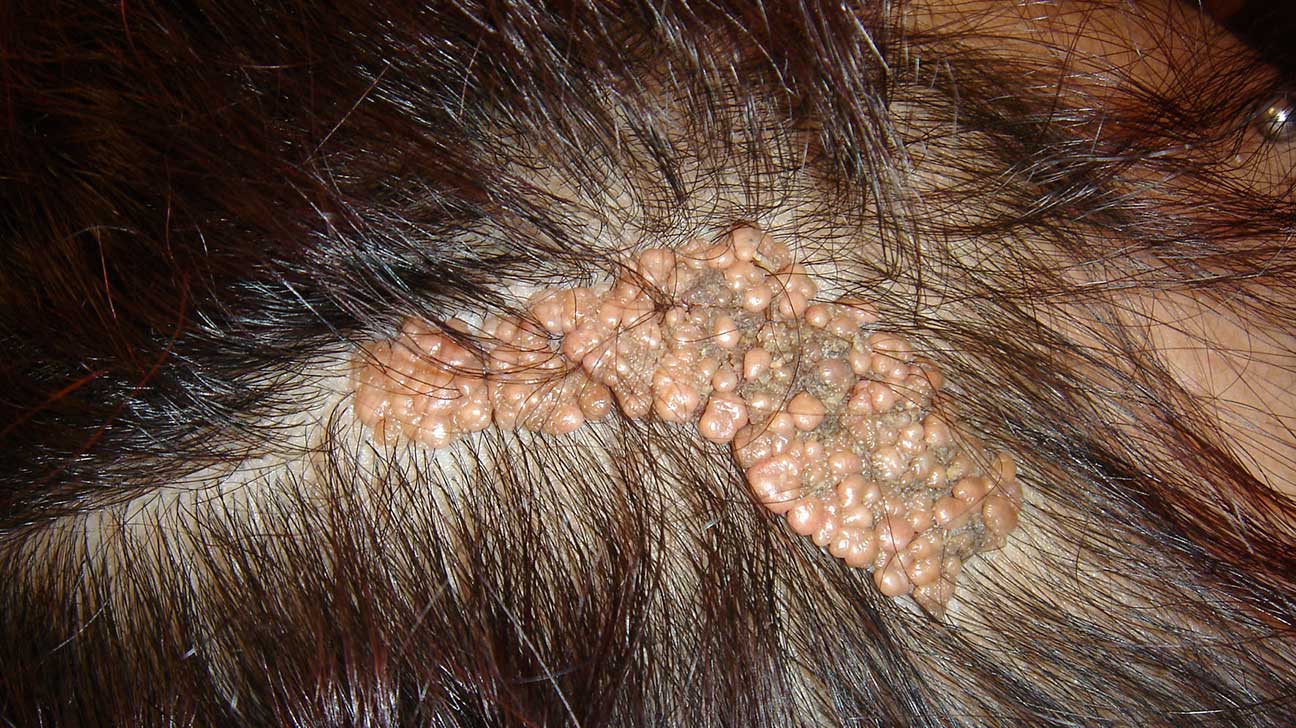
Nevus Sebaceus of Jadassohn might sound like a mouthful, but it's a condition worth understanding. This skin disorder, usually present at birth, appears as a yellowish, hairless patch, often on the scalp or face. Why should you care? Because it can change over time, sometimes leading to benign or even malignant growths. Knowing the facts can help you stay informed and proactive about skin health. From its unique appearance to potential complications, there's a lot to learn about this intriguing condition. Ready to dive into the details? Let's uncover 30 essential facts about Nevus Sebaceus of Jadassohn.
Key Takeaways:
- Nevus Sebaceus of Jadassohn is a rare, yellowish skin patch that can appear at birth. It's usually harmless, but regular check-ups are important to catch any potential complications early.
- Living with Nevus Sebaceus can be tough, especially for kids. But support groups and research are helping to improve understanding and treatment options.
What is Nevus Sebaceus of Jadassohn?
Nevus Sebaceus of Jadassohn is a rare skin condition that usually appears at birth or early childhood. It manifests as a hairless, yellowish patch on the scalp, face, or neck. Understanding this condition can help in managing it effectively.
-
Nevus Sebaceus of Jadassohn is a congenital skin lesion, meaning it is present at birth.
-
The condition is named after Josef Jadassohn, a German dermatologist who first described it in 1895.
-
It typically appears as a yellow-orange, hairless plaque on the scalp, face, or neck.
-
The lesion is composed of an overgrowth of sebaceous glands, which are responsible for producing oil in the skin.
-
Nevus Sebaceus can sometimes be mistaken for other skin conditions like eczema or psoriasis.
Symptoms and Appearance
Recognizing the symptoms and appearance of Nevus Sebaceus is crucial for early diagnosis and treatment. Here are some key characteristics to look out for.
-
The lesion often has a velvety or warty surface texture.
-
It may become more pronounced and thicker during puberty due to hormonal changes.
-
The size of the lesion can vary, but it generally grows proportionally with the child.
-
Nevus Sebaceus is usually asymptomatic, meaning it doesn't cause pain or discomfort.
-
In rare cases, the lesion can become itchy or irritated.
Potential Complications
While Nevus Sebaceus is generally benign, there are some potential complications that can arise. Awareness of these can help in monitoring the condition more effectively.
-
There is a small risk of the lesion developing into a basal cell carcinoma, a type of skin cancer.
-
Other types of skin tumors, both benign and malignant, can also develop within the lesion.
-
Regular monitoring by a dermatologist is recommended to catch any changes early.
-
Surgical removal of the lesion is often considered to prevent potential complications.
-
The risk of malignant transformation increases with age, making early intervention important.
Treatment Options
Various treatment options are available for Nevus Sebaceus, ranging from conservative management to surgical intervention. Here are some common approaches.
-
Observation and regular check-ups are often recommended for asymptomatic lesions.
-
Surgical excision is the most definitive treatment and can be performed under local anesthesia.
-
Laser therapy is another option, particularly for smaller lesions.
-
Topical treatments are generally not effective for this condition.
-
Post-surgical follow-up is important to monitor for any recurrence or complications.
Psychological and Social Impact
Living with Nevus Sebaceus can have psychological and social implications, especially for children and adolescents. Understanding these impacts can help in providing better support.
-
The visible nature of the lesion can lead to self-consciousness and social anxiety.
-
Children with Nevus Sebaceus may experience bullying or teasing from peers.
-
Psychological counseling can be beneficial for those struggling with self-esteem issues.
-
Support groups and online communities can provide a sense of belonging and understanding.
-
Educating friends and family about the condition can help in reducing stigma and misconceptions.
Research and Future Directions
Ongoing research is crucial for better understanding and managing Nevus Sebaceus. Here are some areas where research is making strides.
-
Genetic studies are being conducted to understand the underlying causes of Nevus Sebaceus.
-
Advances in dermatological surgery are improving outcomes for patients.
-
New imaging techniques are helping in the early detection of malignant changes.
-
Research into less invasive treatment options is ongoing.
-
Patient registries and databases are being developed to track outcomes and improve care.
Key Points to Remember
Nevus Sebaceus of Jadassohn, a rare skin condition, often appears at birth or early childhood. It usually presents as a yellowish, hairless patch on the scalp, face, or neck. While mostly benign, it can sometimes develop into other skin issues or tumors, so regular check-ups with a dermatologist are crucial. Treatment options vary from monitoring to surgical removal, depending on the lesion's behavior and any associated complications.
Understanding this condition helps in early detection and management, ensuring better outcomes. If you or someone you know has Nevus Sebaceus, staying informed and consulting healthcare professionals can make a big difference. Remember, knowledge is power when dealing with any medical condition. Stay proactive about your skin health and don't hesitate to seek medical advice if you notice any changes.
Frequently Asked Questions
Was this page helpful?
Our commitment to delivering trustworthy and engaging content is at the heart of what we do. Each fact on our site is contributed by real users like you, bringing a wealth of diverse insights and information. To ensure the highest standards of accuracy and reliability, our dedicated editors meticulously review each submission. This process guarantees that the facts we share are not only fascinating but also credible. Trust in our commitment to quality and authenticity as you explore and learn with us.
